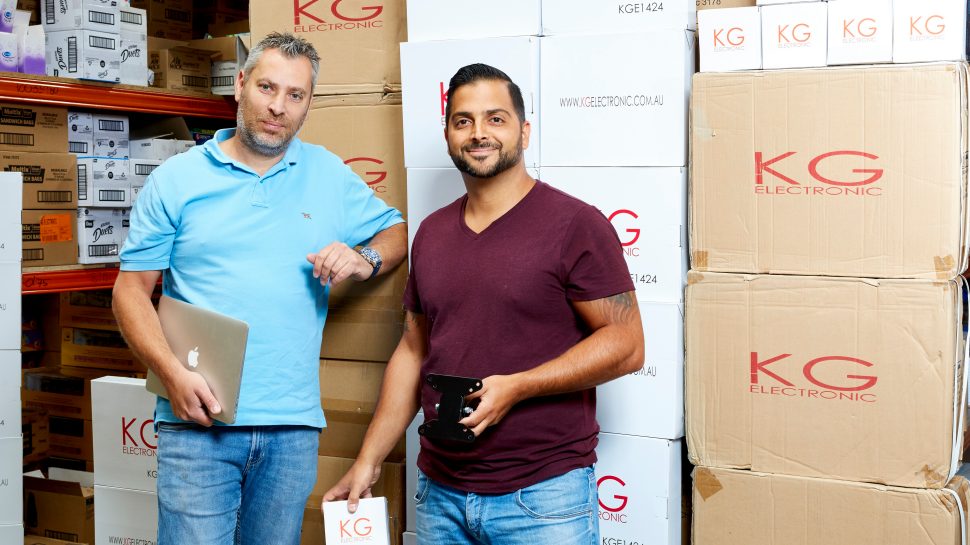How Le Tour Cycles is riding ahead of the pack
A cycling company made a 180-degree shift when it relocated its business from a physical store to an eCommerce one. Today Le Tour Cycles is building a strong presence both online and internationally.

For the first four decades of business, Le Tour Cycles existed purely as a bricks and mortar store in Kilsyth, Victoria. Then in 2011, it noticed a shift in customers’ buying behaviour towards online stores. Recognising the huge untapped opportunity, its manager Rigo Sartori moved quickly to create a website and a listing on eBay. But it would be a while before Le Tour Cycles’ eCommerce presence really took off.
“We spent the first six to 12 months finding our feet and learning what products were best suited to an online platform in terms of demand, practicality and pricing,” Rigo says. “We also had a lot of stock to lift and we were still doing everything manually. There was no automation involved at the time, and it took about a good year before we started making a little headway and gaining traction.”
Without a social media presence back then, eBay was a huge catalyst for Le Tour and Rigo worked hard on the SEO value in their listings. A year later, he redesigned the website and launched Le Tour Cycles on two more marketplaces. As their stock expanded, so did their target audience and customers. When Rigo looks back over his nine years at Le Tour Cycles, he marvels at how far they’ve come.
“So much has changed. If you go back 10 years, we didn’t have any online presence and now it’s a complete 180-degree shift. We no longer have a workshop and are completely focused online. Customers still pick up items from our warehouse but we’re not your traditional retail store anymore.”
“Our business goals have changed too. We’re looking spreading ourselves across as many eCommerce marketplaces as we can to sell as many different products as we can. And we’ve begun getting a lot of international orders too, especially from the United States and Europe.”
What has been the biggest difference in running an online store compared to a physical one?
The product demand. Hardware is definitely better suited to a bricks and mortar store. Products that require a certain degree of technicality and a mechanic’s expertise won’t work online. Our online listings only comprise basic accessories that can be used universally like tubes, tyres and car racks.
What were the early challenges of international shipping?
The biggest hurdle has always been postage cost for two different reasons – the tracking number and the delivery timeframe. A tracker means extra cost and the timeframe means sending parcels by express shipping which can be expensive. When your average sale is $50 and your shipping cost is also $50 it really cuts into the sales and profits.
Was international sending always part of your eCommerce strategy?
Not really. We weren’t even on eParcel initially. We were just sending on pre-paid tracking labels. When we did get onto eParcel, it was solely for domestic sending. We only explored an international option in 2014.
Is there anything you wish you did differently when you first started exporting products?
Yes, I wish we used express shipping from the very start. We started off sending parcels via sea which we always knew would take a while but we thought the lower shipping cost would make up for it. But we very quickly found out that customers prioritised receiving a parcel sooner than paying lower postage fees. So we started trying out express shipping and soon reached a point where we were only selecting that option for international sending. And it has been fantastic.
How much of your total monthly sales consist of international orders?
It’s rather small these days - less than 1 per cent. I’d love to see it grow to between 5 and 10 percent in the next three years. To do that, we plan to expand our presence across as many eCommerce marketplaces as possible, and securing international contracts with better shipping rates will be a major factor in making that a reality.
What has been the most worthwhile investment in your business?
Automation. Having our database linking to everything has changed the way we do business. Our database controls our stock levels and our messaging and email service. Before this, we were using the copy-paste method. That took a while!
What tips do you have for other small businesses looking to export their products?
Look where your products fit internationally and why a certain demographic needs to buy from you rather than from a local supplier. Based on the messages I receive from international customers, it’s because they can’t locate the product in their own country and are willing to pay the postage cost for it. Also, always make sure the customer receives the product within the timeframe of the contracted sale.
Ready to take on the world?
Read our Insights paper on the Australian small businesses that have gone global and begin charting your route there.
Get business stories, ideas and offers in your inbox each month.



